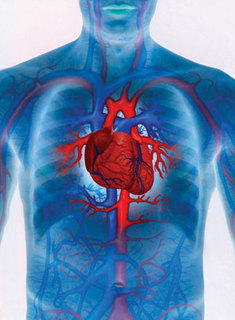And now, wearable technology. Call it wearware
Published:
28 March 2001 y., Wednesday
IBM in the jewelry business? Dutch electronics maker Philips selling street wear jackets? American high-tech start-ups creating space-age shades? Yes, yes and yes.
AT THIS YEAR’S CeBIT, IBM is showing studies of wearable computer add-ons such as a silver necklace with a hidden microphone, a lady’s display watch, earrings with speakers, and a ring whose elegant turquoise stone doubles as a nifty scroll-point mouse. Last year, Philips got together with jeans maker Levi Strauss for a limited edition of “wearable electronics garments” — jackets with a GSM mobile and an MP3 player in special pockets, with a small remote control on the front flap of the jacket and a microphone in the collar. The two devices work together, with the music turning itself off when you talk on the phone. (Available only in Europe, all 800 jackets quickly sold out). And about half a dozen companies are working on special glasses that use sophisticated optics to create screen-size images in front of your eyes.
One of the more intriguing developments in the industry is the push by some of the biggest companies into what’s become known as “wearables” — computers and accessories we can use on the go, while we’re busy doing other things. Wearables are already widespread in industry, where workers often need access to information but also need to keep their hands free. Workers building aircraft use head-mounted displays and speech-input devices for complex assembly tasks, which frees them from referring to lengthy manuals.
British Airways in experimenting with a crew of roaming check-in attendants at Heathrow’s Terminal 4, outfitted with keyboards on their forearms and a mini-display on a headset. Bell Canada sends its service technicians out to fix phone lines wearing a small computer in their pocket, a keyboard or touch-screen strapped to their wrist, and a helmet equipped with an optical display and a digital camera that beams pictures of trouble spots back to the maintenance center, wirelessly. Having quick access to precise instructions while they’re up on some telephone pole lets workers do more work in less time, says Daniel Butler, an executive at Fairfax, Virginia-based Xybernaut, maker of the wearable system BA and Bell Canada use.
Šaltinis:
NEWSWEEK
Copying, publishing, announcing any information from the News.lt portal without written permission of News.lt editorial office is prohibited.
The most popular articles
 The international medical aid agency Medicine Sans Frontieres say the migrants - who are being employed in Southern Italy, are being exploited by living in very poor conditions and being paid meagre wages.
more »
The international medical aid agency Medicine Sans Frontieres say the migrants - who are being employed in Southern Italy, are being exploited by living in very poor conditions and being paid meagre wages.
more »
 Inmates at the Philippine national prison never imagined they would serve sentences by making dresses.
more »
Inmates at the Philippine national prison never imagined they would serve sentences by making dresses.
more »
 In Albert Einstien's view "common sense is the collection of prejudices acquired by age 18".
more »
In Albert Einstien's view "common sense is the collection of prejudices acquired by age 18".
more »
 Prosecutors in Poland are examining whether the exhibition entitled 'Bodies' is illegal.
more »
Prosecutors in Poland are examining whether the exhibition entitled 'Bodies' is illegal.
more »
 New proposal to strengthen disaster prevention capacities and increase cooperation with developing countries.
more »
New proposal to strengthen disaster prevention capacities and increase cooperation with developing countries.
more »
 Private broadcaster Channel 10 aired "The Tonight Show" with Lior Shlein last week, with a skit depicting the Virgin Mary as a pregnant teenager and Jesus as being too fat to walk on water.
more »
Private broadcaster Channel 10 aired "The Tonight Show" with Lior Shlein last week, with a skit depicting the Virgin Mary as a pregnant teenager and Jesus as being too fat to walk on water.
more »
 Stockholm and Hamburg named first ‘green capitals’. Budapest wins European mobility week award.
more »
Stockholm and Hamburg named first ‘green capitals’. Budapest wins European mobility week award.
more »
 Bells ringing out to mark the start of the ceremony in Melbourne - capital of the disaster-hit state of Victoria.
more »
Bells ringing out to mark the start of the ceremony in Melbourne - capital of the disaster-hit state of Victoria.
more »
 Carnival's celebrated in Germany's mainly Catholic regions - the south and the west.
more »
Carnival's celebrated in Germany's mainly Catholic regions - the south and the west.
more »
 Circus campaign will raise awareness of EU social policies in 2009.
more »
Circus campaign will raise awareness of EU social policies in 2009.
more »